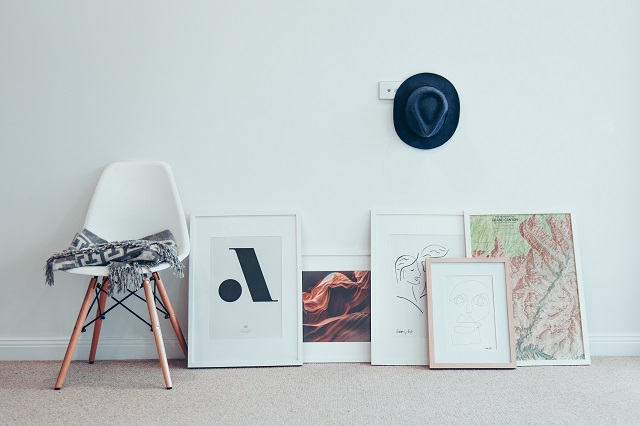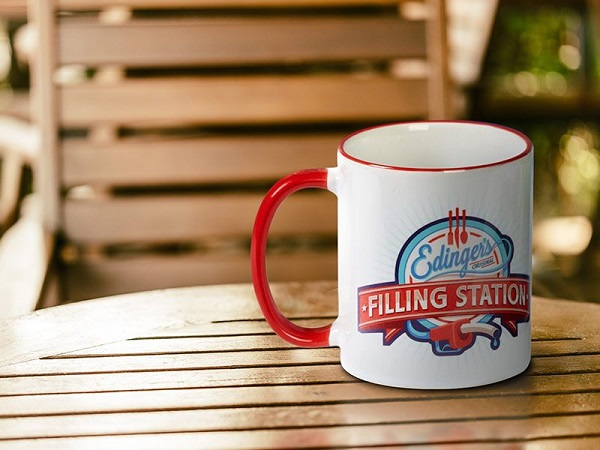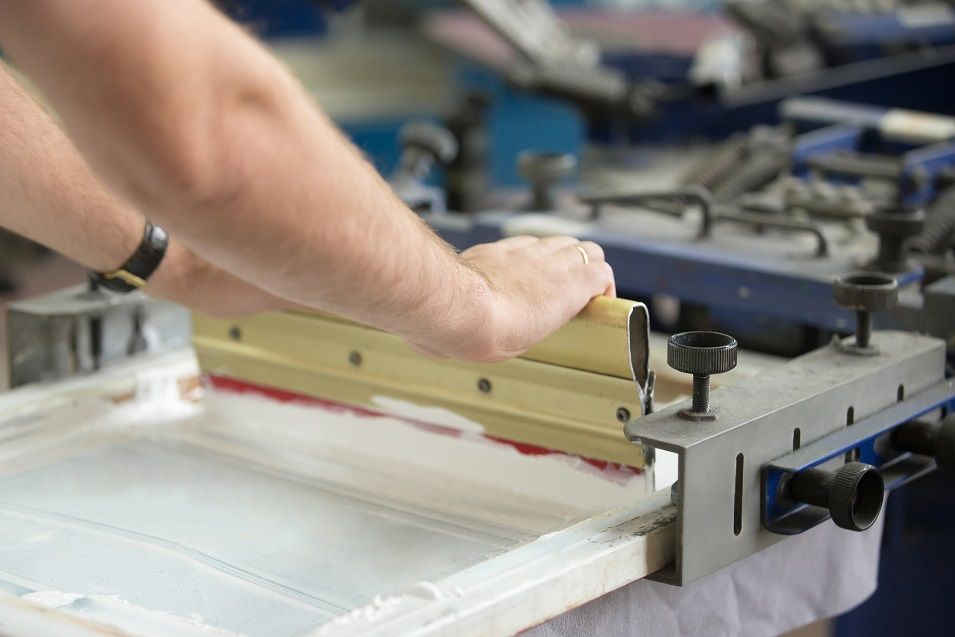What is Sublimation Printing?
by Karen Jones
A sublimation printer is one of the most used tools for printing or printing t-shirts, mugs, hats, glass, wood, metal, key chains, and much more. If you are looking to print or customize a mug, shirt, hat, or another object, you are on the right website. In this article, we discuss “What is Sublimation Printing.”
We have compiled all the information you need to stamp your objects using the sublimation technique—advice, machines, printers, inks, paper polymers, and all the information to facilitate the process.
Contents
- What is Sublimation Printing?
- Types of Sublimation Printing Methods
- Sublimation in Mugs – Customize to Your Liking
- Sublimation in T-shirts – Useful Tips
- Sublimation in Cotton – The Correct Way To Do It
- Sublimation in Cloth or Textile a Very Lucrative Process
- Textile Digital Sublimation: A Large Industry That is in Auge
- Sublimation in Caps – Customize to Your Liking
- The Process to Sublimate Hats
- Sublimation in Wood for Home Decoration
- Sublimation in Glass
- How to Sublimate Keychains
What is Sublimation Printing?

Sublimation has different meanings depending on the context; when we dedicate ourselves to the printing sector, it prints the image on paper. Later, through heat, the ink is transferred to another material.
In the sublimation technique, it is necessary to consider that not any material or substrate can be sublimated; it requires specific characteristics to be able to receive the transfer of said ink and maintain a temperature above 200 ° Celsius.
For many, the term printing by sublimation sounds strange, but once you investigate a bit, you realize that of the practical and easy process of printing by sublimation.
In simple terms, sublimation printing is the printing technique that consists of transferring the ink through heat. Nowadays, it is the most popular printing technique for many products such as cups, caps, plates, and objects for decoration.
It is also used for rigid materials such as porcelain, glass, metal, rocks, etc. One of the significant advantages of sublimation printing is that technical knowledge is not needed. It is an easy technique to apply; sublimated objects acquire a great added value, which can be sold reasonably.
Types of Sublimation Printing Methods

Sublimation in Mugs – Customize to Your Liking
Have you ever taken coffee or tea in a personalized cup with a photograph of a loved one? This process is known as sublimation and consists of transferring liquid ink to the cup by using a heat press machine is a widely used technique for customizing ceramic mugs.
Sublimation in cups is a straightforward technique, but with very professional results; one of the advantages of cup sublimation is that no technical knowledge is required since it is an easy process to do.
To sublimate cups, you need the following materials and equipment: A printer for sublimation, special paper for sublimation, special ink for sublimation, unique ceramic mugs for sublimation, and a thermal plate to sublimate cups; today, you can find a wide range of plates to sublimate choose the most suitable to your needs.
Sublimation in T-shirts – Useful Tips
Sublimation in fabric or textile allows making high-quality prints with very professional results. This technique facilitates printing photos or images, making it possible to personalize garments such as t-shirts and shirts, giving it an added value to the garment.
If you are starting in the process of sublimation on shirts, you must keep in mind the following points.
The best printing results are obtained using 100% polyester shirts, this being synthetic fiber that absorbs better the inks acquiring with this prints brighter and more durable.
Also, to obtain optimal prints, better print quality, sharper colors, and brightness, the shirt has to be white or with transparent backgrounds; a very innovative alternative is to use 100% polyester garments but cotton contact.
Sublimation is also possible in cotton, but it is necessary to implement certain variables in your printing plate to carry it out with satisfactory results. On our website, we will explain more in detail the solutions so that you can sublimate in cotton, and you can offer your customers a line of cotton sublimated t-shirts.
Sublimation in Cotton – The Correct Way To Do It
The sublimation in cotton can only be done using some additional supplies. We know the textile sublimation should always be made in polyester because it has better ink absorption, therefore providing better prints with more vivid colors.
To sublimate garment made of cotton, it is necessary to use additional inputs such as
Sublimable liquid polyester, a polymer made from thermoset polyester resins. A thin layer is applied in the area of the fabric that we are going to sublimate, and with this, we already have the area ready to absorb the ink.
Polyester sheets: it is another material that you can use to sublimate in cotton. These sheets are activated at a temperature of 200ºC for an approximate time of 12 seconds, using your sublimation plate. Once you have transferred the polyester layer to your shirt, you print the drawing to sublimate and then transfer it to your garment.
Sublimation in Cloth or Textile a Very Lucrative Process
Sublimation in fabric or textile sublimation is a technique widely used to customize garments; the fabric to sublimate must meet certain specifications to obtain good results and for the image to be durable. The fabric must have at least 70% Polyester and preferably be white or a light color to get good image quality.
Textile sublimation offers many advantages, among the most important: it is easy to make, you have no limit in the number of colors, the quality is superior, and you do not need technical knowledge to start in the business sublimation.
Textile Digital Sublimation: A Large Industry That is in Auge

Digital textile sublimation is at an industrial level, and the plotters are used to print directly on the fabric. Currently, large textile companies use digital textile sublimation in their processes and are printing on large volumes of cloth. Digital sublimation is very profitable given its low cost, which makes it a very competitive process.
The Asian countries and Brazil in the American continent are the leaders in digital textile sublimation. The sublimation plotter is increasingly more efficient and capable of high production volumes, so many textile companies are incorporating the new digital textile sublimation equipment in their textile printing processes. To be more competitive.
Sublimation in Caps – Customize to Your Liking
The sublimated caps are a product that is in great demand because they are very innovative products because, thanks to the sublimation can be customized.
To customize your caps, you must have a thermal press that has the module for the sublimation of hats; for this, it is recommended that you acquire a multifunctional thermal plate so that you can also sublimate other products.
- Cap specifications to sublimate
- The material of the cap must be Polyester.
- Must have a white area to print at least 175mm x 75mm
- The approximate measurements of the caps should be 260 x 155 mm
The Process to Sublimate Hats
- First: we print our design based on the size of the area where we are going to print; you must print in mirror mode with special inks for sublimation.
- Second: Remember to remove the cardboard that the new caps bring, then you must pre-heat the 190ºC thermal plate for 5 seconds in the first cap, put the cap on the sublimation plate, adjust it well with plastic straps so that it is well stretched as best you can. The visor of the cap should not stick on the hot iron.
- Third: We pre-warm the cap to prepare the surface and correct the wrinkles
- Fourth: Then, immediately after the preheating, place the impression are on the cap and proceed to sublimate at a temperature of 190ºC for 20 seconds. You must close the plate very gently so that it closes well, and then you must also lift it gently.
Sublimation in Wood for Home Decoration
The sublimation in wood uses the same principle of transfer of the ink using heat, in the same way, that when we sublimate cups or T-shirts, we need practically the same elements.
The difference between the sublimation of cups and the sublimation in wood is that an additional component is used in the second, a polymer for sublimation called commercially “primer for sublimation,” which is applied on the porous wood, which after it is dry is entirely transparent.
Then the impression is placed with the drawing to sublimate, and the next step is to apply heat with the iron to transfer the design to the wood. This technique allows us to print photos, messages, and any image on the wood, creating a greater visuality in the pieces of wood.
Sublimation in Glass
Sublimation in glass is very easy to make, and you can create glass jars with very innovative designs for either a unique gift or for your business. The equipment and materials to sublimate in glass are iron to sublimate jars, printers for sublimation, jugs to sublimate, and special sublimation paper.
The impression of sublimation is clear and realistic if we compare it with laser or inkjet printing; sublimation is widely used because it is a straightforward technique to apply and is now available to everyone.
How to Sublimate Keychains
The sublimation keychains should be unique key fobs for sublimation; they should be made of medium-density fiberboard (MDF). They are printed with a polymer layer to transfer the image with our heat press.
The first step to make sublimated keychains is to print your design based on the size of the keychain; using your printer and sublimation inks, you must print the image in mirror mode and then put to heat the iron according to the manufacturer’s specifications.
Then you fix the image with thermal tape to hold the design on the keychain. You put a sheet of bond paper on the surface of the iron and place the keychain on the iron, and set your temperature to 180 ° C for 60 seconds, then close at medium pressure and start the sublimation process is ready for sale.
 |  |  |  |

About Karen Jones
Karen Jones has always been a writer at heart. As a freelance writer and social media marketing consultant for the last decade, she's honed her skills in crafting catchy and interesting articles that reel in readers. She also enjoys traveling, which is where she gets most of her ideas for her writing. In fact, if you can't find Karen around her friends and family, it's likely because she's holed up in her home office working on refining her writing composition and printing press!
Thoughts on "What is Sublimation Printing?"
 |  |  |  |
Get some FREE Gifts. Or latest free printing books here.
Disable Ad block to reveal all the secret. Once done, hit a button below
 |  |  |  |